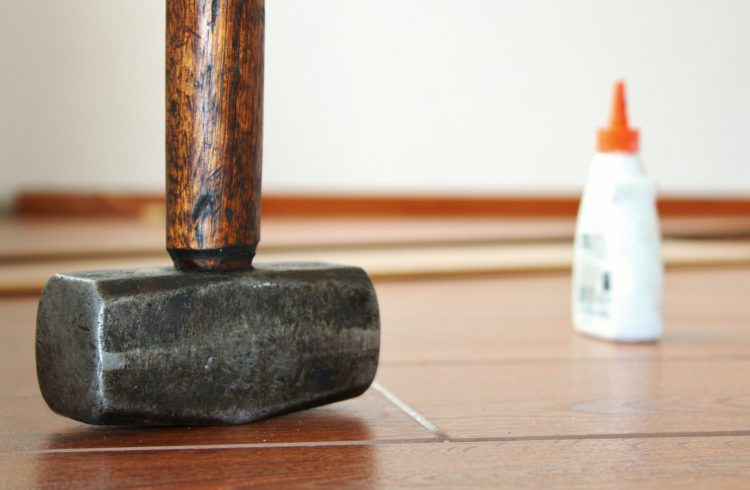Few home projects are as daunting as kitchen renovations. Floor plans. Cabinets. Hardware. Appliances. Flooring. Paint. Light fixtures. Countertops. It’s enough to make you curl up in the fetal position.
It doesn’t have to go that way. Armed with some basic information, you can renovate your kitchen with confidence, knowing you’ll make sound decisions that’ll get you the best bang for your buck while adding long-term value to your home.
When planning to remodel your kitchen, here are five key things to consider before you get up off the floor, pick up a sledgehammer, and commence demolition.
1. Money Talks
It may sound obvious, but the first thing you need to do is develop a budget. How much should you expect to pay?
Prepare for some sticker shock: According to a 2017 survey conducted by the National Association of the Remodeling Industry and the National Association of Realtors, the average cost of a kitchen upgrade is about $35,000, while the price tag for a complete renovation is around $65,000. On the flip side, in both cases, you can expect to recoup in the neighborhood of 60 percent of that cost when you sell your home.
A more general rule of thumb suggests spending between 5 and 15 percent of your home’s appraised value. If you plan to move soon, consider reining in your impulses and spending less. But if you plan to stay put for five years or more, splurge on amenities like countertops, cabinets, appliances, and flooring.
Ways to save:
- Keep your existing floor plan (it’s expensive to move walls and electrical and plumbing lines).
- Refurbish your cabinet doors instead of buying new ones.
- Keep your existing appliances and buy new ones as your budget permits.
- Ditto for light fixtures and flooring.
2. Hire a Designer
The details involved in kitchen projects are mind-boggling. To ensure you cover all the bases, one of the key steps to remodeling a kitchen is hiring a professional designer. Experts suggest this should cost about 10 percent of your overall budget, and it’s well worth it — an experienced designer will present options and solutions that you’d likely never think of yourself. They can also recommend better materials that will last longer and increase value in your home.
3. Timing Is Everything
One of the key steps to remodeling a kitchen is understanding timelines and how each step affects the next. Consider that:
- Ordering custom-made cabinets can easily take four to six weeks.
- Developing plans can take a month or more.
- With the current remodeling boom, many contractors are already booked for months ahead of time.
- Countertops can take weeks to deliver, and you can’t get countertop measurements until the base cabinets are set.
With these moving pieces and more, staying on track requires proper up-front planning.
Tip: Since you could be without a kitchen for upwards of 10 weeks, consider planning in winter and remodeling in summer, when you can grill meals outdoors.
4. Demo-Day Tips
It’s easy to get fired up and go all Hulk on your walls and cabinets. But a little finesse equals much less mess — and can save you money, too.
For example:
- Safety first! Remember to:
- Use eye protection and gloves.
- Wear closed toe shoes or boots.
- Always bend over nails during the process so you don’t step on one.
- Before bashing in a wall, makes small holes with a hammer to check for electrical or plumbing lines susceptible to damage from reckless sledgehammering. Be sure to shut off your water just in case.
- On drywall, sledgehammers are also effective as a pulling tool. When removing drywall, use the sledgehammer to make a hole, then leave the head inside and use it to pull the drywall away from the studs. As the drywall comes free of the studs, remove it by hand in larger pieces. This will help eliminate dust and further damage. Once you have one side pulled out, use the sledgehammer to knock out the other side by hitting along the studs.
- Unscrew cabinets from walls rather than smashing them up or ripping them off. That way, if you’re getting new cabinets, the old ones will remain suitable for donating to organizations that can reuse such materials. It’s also not as messy.
- Put a box fan in a window to suck out the construction dust.
5. Counter Moves
When selecting the right countertop, a little advanced research can help you avoid a high-maintenance situation.
Here’s a simple rule of thumb to follow: The more porous the surface, the more maintenance it’ll require. For example, natural stone is porous, so, with few exceptions, you’ll have to seal it to minimize upkeep and maximize its durability. Natural marble in kitchens can add extra maintenance because it easily shows signs of wear and can be damaged by things as innocuous as lemon or tomato juice — so if you want marble in your kitchen, engineered is a better choice than natural.
Quartz is an optimal surface for kitchens due to easy maintenance. The glossier the finish on engineered quartz countertops, the easier they are to clean. In the countertop industry, we use a device called a gloss meter to determine the polish level of the finish. High-level polish finishes translate into easier cleaning and maintenance because it’s much more difficult for dirt to adhere to them. (Santamargherita engineered quartz surfaces typically measure 62 to 65 on a scale of one to 100 on a gloss meter, with 100 being a perfectly smooth surface.) The current trend is toward lighter-colored countertops, which makes a high-gloss finish even more important.
In general, picking quality material will build value in your home. You can enjoy your surfaces and know that they’ll be in great shape when you decide to sell (meaning that you won’t have to renovate again).
Of course, there are myriad other things to take into account before you pick up that sledgehammer and start taking steps to remodeling your kitchen. But following these basics will put you in a position to succeed.
Want to learn more? Kick-start your renovation by finding a Santamargherita dealer near you.
—
John Brodrick is the North American sales manager for Santamargherita. He has 17 years of experience in the manufacturing industry specializing in engineered surfaces for residential and commercial use. John has lent his expertise to projects worldwide ranging from airports and shopping malls to thousands of residential homes.

